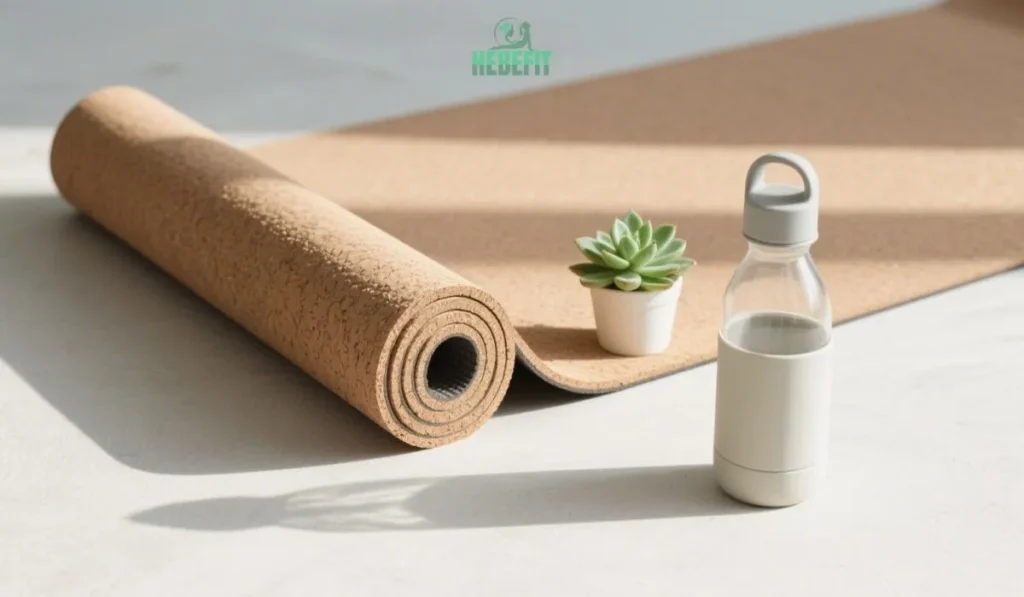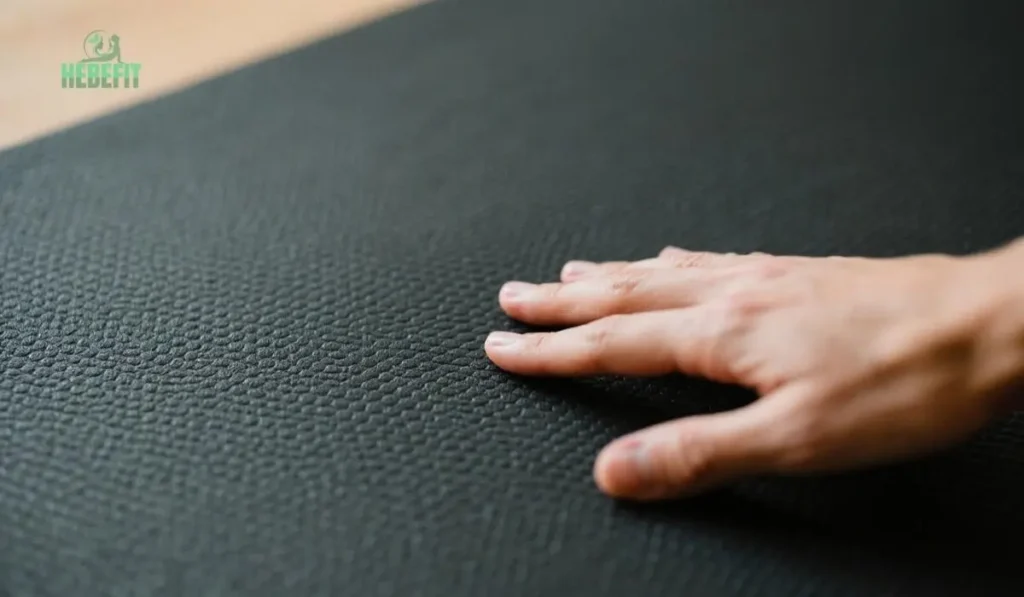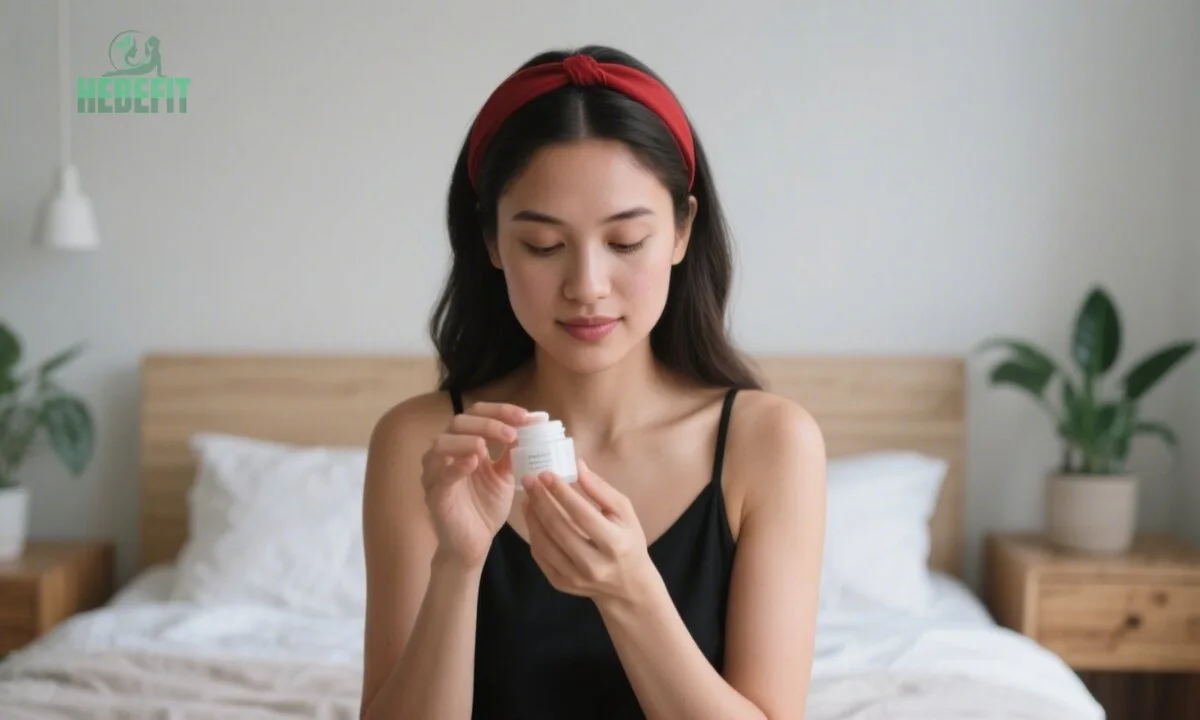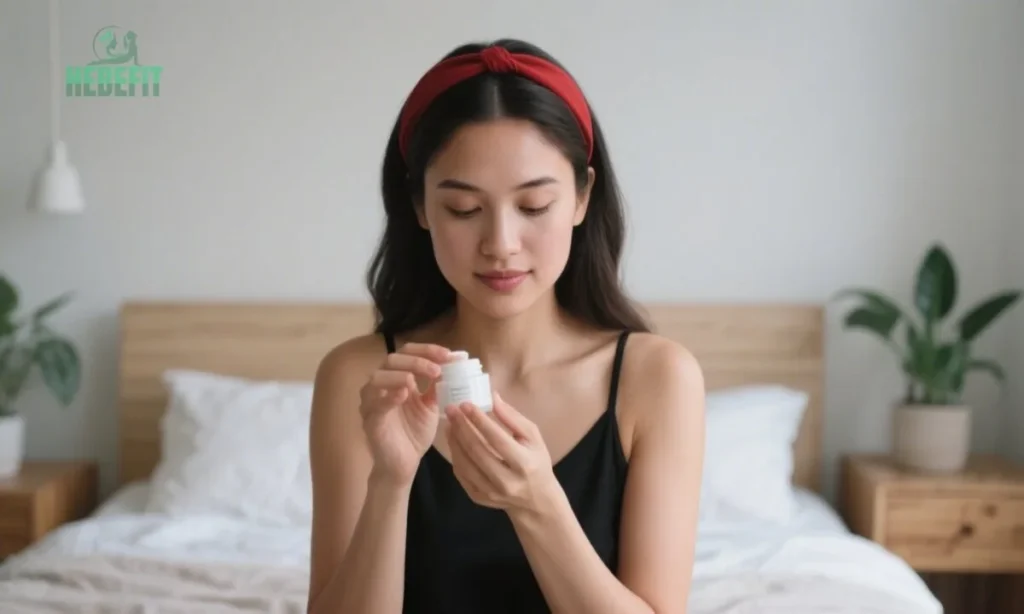Welcome, yogis and wellness seekers! Are you ready to elevate your practice from the ground up? In a world increasingly focused on sustainability and personal health, the surface you practice on matters more than you might think. that’s where the natural fitness yoga mat comes into play. Choosing a natural fitness yoga mat isn’t just a trend; it’s a conscious decision towards a healthier you and a healthier planet. If you’ve ever wondered what makes a natural fitness yoga mat different, or why it might be the perfect upgrade for your daily flows, you’re in the right place. This guide will unravel everything you need to know, ensuring your next savasana is truly serene and supportive.

What Exactly is a Natural Fitness Yoga Mat?
At its core, a natural fitness yoga mat is a yoga mat crafted primarily from natural, renewable, and often biodegradable materials. Unlike conventional mats that frequently rely on synthetic materials like PVC (polyvinyl chloride) or TPE (thermoplastic elastomer), which can contain potentially harmful chemicals and take centuries to decompose, natural mats offer an earth-friendlier alternative.
Think materials sourced directly from nature:
- Natural Rubber: Tapped from rubber trees, offering excellent grip and cushioning.
- Cork: Harvested from the bark of cork oak trees, known for its antimicrobial properties and superior grip, especially when wet.
- Jute: A fibrous plant material that provides a textured, earthy feel and good durability.
- Organic Cotton: Soft, absorbent and machine washable, often used for lighter practices or as a mat topper.
- Hemp: A durable, strong fiber that becomes softer with use, offering a unique texture.
The emphasis is on sustainability, non-toxicity, and biodegradability. A true natural fitness yoga mat aims to minimize environmental impact throughout its lifecycle, from sourcing raw materials to eventual disposal. It’s about creating a sacred space for your practice that aligns with a deeper respect for your body and the Earth.
Why Do We Need to Know About Natural Fitness Yoga Mats?
In an age of information overload, you might wonder why the specifics of your yoga mat deserve attention. The answer lies in the intersection of personal well-being, environmental consciousness, and the quality of your practice.
- Health Implications:
- Reduced Chemical Exposure: Conventional PVC mats can off-gas volatile organic compounds (VOCs) and may contain phthalates, plasticizers, and other chemicals linked to health concerns. When you’re in child’s pose, with your face close to the mat, or simply breathing deeply during your practice, you’re inhaling whatever your mat releases. A natural fitness yoga mat significantly reduces this exposure.
- Skin-Friendly: Your skin is your largest organ. Direct contact with synthetic materials can sometimes lead to irritation for sensitive individuals. Natural materials are generally more breathable and gentler.
- Environmental Impact:
- Sustainability: The materials used in natural mats are often renewable. Cork harvesting, for example, doesn’t harm the tree; the bark regrows. Natural rubber is tapped sustainably.
- Biodegradability: When your natural mat reaches the end of its life, it can decompose much more readily than synthetic alternatives, reducing landfill burden.
- Ethical Sourcing: Many brands specializing in natural fitness yoga mats also prioritize ethical labor practices and transparent supply chains, a topic we delve into further in our post on “<em>Ethical Consumerism in the Wellness Industry</em>.” (This is a placeholder for your other blog post link!)
- Enhanced Practice:
- Superior Grip: Materials like natural rubber and cork often provide exceptional grip, preventing slips and allowing for deeper, more stable poses.
- Comfort & Support: While varying by material, many natural mats offer a perfect balance of cushioning and stability.
- Connection to Nature: There’s an undeniable grounding quality to practicing on a mat made from earthy materials. It can enhance the mindful aspect of yoga.
Understanding these factors empowers you to make an informed choice—one that supports not just your physical postures but also your values. It’s about practicing with intention, both on and off the mat.

How to Choose, Use, and Care For Your Natural Fitness Yoga Mat
The phrase “how to do a natural fitness yoga mat” might sound a bit unusual, but we can interpret this as how to select the right one for your needs, how to use it effectively, and how to maintain it.
Selecting Your Perfect Natural Fitness Yoga Mat
Choosing the right mat is a personal journey. Consider these factors:
| Feature | Natural Rubber | Cork | Jute | Organic Cotton |
| Grip | Excellent, especially when dry | Good, becomes exceptional when wet | Moderate, textured | Good, can be slippery if dry |
| Cushioning | Good to Excellent | Moderate to Good | Moderate | Light |
| Durability | Very Good | Good, can chip with rough use | Very Good | Good, but prone to wear |
| Weight | Moderate to Heavy | Light to Moderate | Moderate | Light |
| Eco-Impact | Biodegradable, renewable | Biodegradable, sustainable harvest | Biodegradable, renewable | Biodegradable, organic farming |
| Maintenance | Wipe down, avoid direct sunlight | Wipe down, antimicrobial | Spot clean, air dry | Machine washable |
| Price | Mid to High | Mid to High | Mid-Range | Low to Mid |
| Best For | Vinyasa, Ashtanga, all-around | Hot yoga, sweaty practices, Vinyasa | Hatha, general practice | Restorative, Yin, travel |
| Feel | Springy, supportive | Firm, earthy, warm | Textured, natural | Soft, absorbent |
Other Considerations:
- Thickness: Thicker mats (5mm+) offer more cushioning, ideal for sensitive joints or restorative practices. Thinner mats (1-4mm) provide better stability for balancing poses and are more portable.
- Your Practice Style: A vigorous, sweaty practice like hot yoga will benefit immensely from cork’s moisture-activated grip. A gentler Hatha or Yin practice might be comfortable on jute or cotton.
- Allergies: While rare, some individuals have latex allergies, making natural rubber mats unsuitable. Cork, jute, and cotton are excellent alternatives.
- Budget: Natural mats can be an investment, but their durability and benefits often justify the cost.
Using Your Natural Fitness Yoga Mat
Using your natural mat is much like any other mat, but with an enhanced sense of connection.
- Unroll and Settle: Allow your mat to air out briefly before first use, especially natural rubber mats, which can have a distinct (but harmless and temporary) smell.
- Find Your Foundation: Notice the texture and grip. Adjust your stance and pressure to feel secure.
- Embrace the Connection: Appreciate the natural material beneath you. Let it ground your practice.
Caring for Your Natural Fitness Yoga Mat
Proper care extends the life of your mat:
- Regular Cleaning:
- Natural Rubber & Cork: Wipe down with a damp cloth after each sweaty session. For deeper cleaning, use a specialized mat cleaner or a DIY solution of water and a touch of white vinegar or mild, natural soap. Avoid harsh chemicals.
- Jute: Spot clean with a damp cloth. Jute doesn’t absorb much water, so avoid soaking.
- Organic Cotton: Most are machine washable on a gentle cycle. Air dry completely.
- Drying: Always air dry your mat away from direct sunlight, as UV rays can degrade natural materials over time. Hang it or lay it flat.
- Storage: Roll your mat with the top side (practice side) out to prevent creasing and help it lie flat. Store it in a cool, dry place.
- Avoid Oils and Lotions: These can break down natural rubber and stain other materials.
Just as we discuss in “<em>Top 10 Habits for a Sustainable Lifestyle</em>,” mindful care for our belongings is a key part of conscious living. (Another placeholder for your other blog link!)
What are the Undeniable Benefits of a Natural Fitness Yoga Mat?
Investing in a natural fitness yoga mat brings a cascade of benefits that touch upon your health, your practice, and the planet.
For Your Health & Well-being
- Non-Toxic Practice Surface: The most significant health benefit is the absence of harmful chemicals like PVC, phthalates, and BPA often found in conventional mats. This means cleaner air to breathe and no absorption of toxins through your skin.
- Hypoallergenic Properties: Materials like cork are naturally antimicrobial and hypoallergenic, resisting mold, mildew, and bacteria. This is fantastic for shared studio spaces or if you have allergies.
- Improved Respiratory Health: By avoiding off-gassing chemicals, you’re creating a healthier breathing environment, crucial during deep yogic breathing (pranayama).
- Peace of Mind: Knowing your practice space is pure and safe allows for deeper relaxation and focus.
For the Planet
- Sustainable Sourcing: Natural materials are derived from renewable resources. Cork trees continue to live and absorb CO2 after their bark is harvested. Rubber trees are tapped, not cut down.
- Biodegradability: Unlike PVC mats that linger in landfills for hundreds of years, natural mats break down relatively quickly and can return to the earth.
- Lower Carbon Footprint: The production processes for many natural materials are often less energy-intensive and polluting than those for synthetics.
- Supporting Eco-Conscious Brands: Your purchase supports businesses committed to ethical and sustainable practices.
For Your Yoga Practice
- Enhanced Grip and Stability: Natural rubber and cork, in particular, offer unparalleled grip, preventing slips and allowing you to hold poses with more confidence and integrity. This can lead to faster progress and fewer injuries.
- Optimal Cushioning and Support: Natural materials can provide excellent shock absorption without feeling overly “squishy,” protecting your joints while still offering a firm foundation.
- Durability: High-quality natural mats, when cared for properly, are incredibly durable and can last for many years.
- Aesthetic and Sensory Experience: The look and feel of a natural mat—the earthy scent of rubber, the warm touch of cork, the textured weave of jute—can add a grounding, sensory dimension to your practice, deepening your connection to the present moment.
Benefits at a Glance: Natural vs. Conventional Mats
| Feature | Natural Fitness Yoga Mat | Conventional (e.g., PVC) Mat |
| Material Source | Renewable (plants, trees) | Petroleum-based, synthetic |
| Chemicals | Generally free of harmful chemicals | May contain PVC, phthalates, VOCs |
| Biodegradability | Yes, typically | No, or very slow (hundreds of years) |
| Grip | Often superior (esp. rubber, cork) | Varies, can be slippery, may require breaking in |
| Antimicrobial | Often naturally (e.g., cork) | Rarely, may require chemical treatments |
| Eco-Friendliness | High | Low |
| Scent | Natural, earthy (may dissipate) | Can have a chemical “new mat” smell |
| Overall Well-being | Supports holistic health and environmental consciousness | Potential for chemical exposure, high environmental impact |

Final Thoughts: Embrace Your Natural Foundation
Choosing a natural fitness yoga mat is more than just acquiring a new piece of yoga gear; it’s an extension of the yogic principle of Ahimsa (non-harming) – towards yourself and towards the planet. It’s a commitment to a practice that is pure, supportive, and deeply connected to the natural world.
While the initial investment might be slightly higher than a basic synthetic mat, the long-term benefits for your health, the enhanced quality of your practice, and the positive environmental impact make it a worthwhile choice. You’re not just buying a mat; you’re investing in a cleaner lifestyle and a more mindful yoga journey.
We encourage you to explore the wonderful world of natural fitness yoga mats. Feel the difference, breathe easier, and practice with the peace of mind that comes from making a conscious, healthy, and sustainable choice.
We hope this guide has illuminated the path to your perfect natural mat! If you’re passionate about holistic wellness and sustainable living, be sure to check out our other articles on topics like “The Ultimate Guide to Zero-Waste Living” and “Mindful Nutrition for a Vibrant Life.” (More placeholders for your blog links!)
Share your thoughts in the comments below! What’s your favorite natural mat material, or what are you looking for in your next mat?
FAQs: Your Natural Fitness Yoga Mat Questions Answered
Are natural fitness yoga mats more expensive?
Generally, natural fitness yoga mats can have a higher upfront cost compared to basic PVC mats. This is due to the quality of sustainable materials, ethical sourcing, and often more complex manufacturing processes. However, they tend to be more durable, offering better long-term value.
How long does a natural fitness yoga mat last?
With proper care, a high-quality natural yoga mat can last for many years – often 3-5 years or even longer, depending on the material and frequency of use. Natural rubber and jute are particularly known for their durability.
Which natural yoga mat is best for hot yoga?
Cork yoga mats are an excellent choice for hot yoga. Cork’s grip increases with moisture, so the sweatier you get, the better your traction. Some natural rubber mats also perform well in heat, but cork is often favored.
How do I clean a natural rubber yoga mat?
Wipe your natural rubber mat with a damp cloth after use. For a deeper clean, use a solution of water with a few drops of mild, natural soap or white vinegar. Avoid harsh chemical cleaners and prolonged sun exposure, as they can degrade the rubber.
Are natural fitness yoga mats heavy?
The weight varies by material and thickness. Natural rubber mats tend to be heavier, providing excellent stability. Cork and jute mats are generally lighter, and organic cotton mats are very lightweight and portable.
Can I use my natural fitness yoga mat outdoors?
Yes, you can use most natural yoga mats outdoors, but be mindful of rough surfaces that could damage the mat. Also, avoid prolonged direct sunlight, especially for natural rubber, as it can cause the material to dry out and degrade faster. Clean it after outdoor use to remove any dirt or debris.
Where can I buy a good natural fitness yoga mat?
You can find natural fitness yoga mats at specialized yoga studios, wellness stores, and online retailers that focus on eco-friendly products. Look for reputable brands that are transparent about their materials and sourcing practices.
Are all mats labeled ‘eco-friendly’ truly natural?
Not necessarily. ‘Eco-friendly’ can be a broad term. Some TPE mats are marketed as eco-friendly because they are considered less harmful than PVC and are recyclable, but they are still synthetic. Always check the material composition. True natural mats are made from materials like rubber, cork, jute, or organic cotton.










